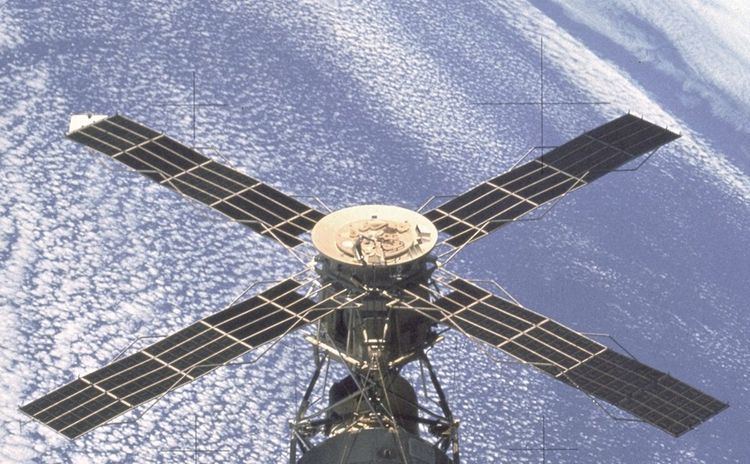 | ||
The ATM was manually operated by the astronauts aboard Skylab from 1973–74, yielding data principally as exposed photographic film that was returned to Earth with the crew. The film magazines had to be changed out by the crew during spacewalks.
Contents
The ATM was designed and construction was managed at NASA's Marshall Space Flight Center. It included eight major observational instruments, along with several lesser experiments. The ATM made observations at a variety of wavelengths, from extreme ultraviolet to infrared.
As of 2006, the original exposures were on file (and accessible to interested parties) at the Naval Research Laboratory in Washington, D.C..
History
The Apollo Telescope Mount, or ATM, was a solar observatory attached to Skylab, the first American space station. The ATM was one of a number of projects that came out of the late 1960s Apollo Applications Program, which studied a wide variety of ways to use the infrastructure developed for the Apollo program in the 1970s. Among these concepts were various extended-stay lunar missions, a permanent lunar base, long-duration space missions, a number of large observatories, and eventually the "wet workshop" space station.
In the case of the ATM, the initial idea was to mount the instrumentation in a deployable unit attached to the Service Module, this was then changed to use a modified Apollo Lunar Module to house controls, observation instruments and recording systems, while the lunar descent stage was replaced with a large solar telescope and solar panels to power it all. After launch, it would be met in orbit by a three-crew Apollo CSM who would operate it and retrieve data before returning to Earth. As many of the other concepts were dropped, eventually only the space station and ATM remained "on the books". The plans then changed to launch the ATM and have it connect to Skylab in orbit. Both spacecraft would then be operated by the Skylab crews.
With the cancellation of the later Apollo landing missions providing a Saturn V, the wet workshop concept was no longer needed. Instead, the plans were changed to orbit an expanded, dry version of the station. The ATM would now be launched attached to the station, as the Saturn V had enough power to launch them both at the same time. This change saved the Skylab program when a problem during launch destroyed one of the workshop solar panels and prevented the other from automatically deploying. The windmill-like arrays on the ATM, which fed power to both the ATM and the station, remained undamaged due to the protection within the launch shroud, and provided enough power for manned operations until the one remaining workshop array could be deployed during the first manned mission.
Instruments
There were 8 major solar studies instruments on the mount. Combined, they could observe the Sun in light wavelengths from 2 to 7000 Å (angstroms), which corresponds to soft X-ray, ultraviolet, and visible light.
Film
Six ATM experiments used film to record data, and over the course of the missions over 150,000 successful exposures were recorded. The film canister had to be manually retrieved on manned spacewalks to the instruments during the missions. The film canisters were returned to Earth aboard the Apollo capsules when each mission ended, and were among the heaviest items that had to be returned at the end of each mission. The heaviest canisters weighed 40 kg and could hold up to 16,000 frames of film.
